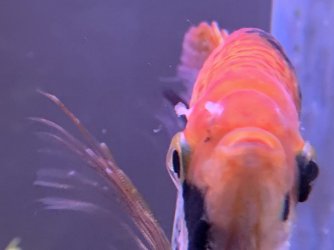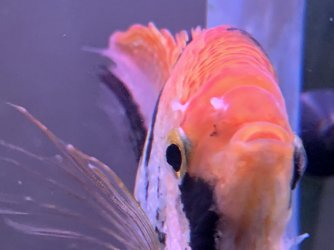kmckycarlson
New Member
We have 2 large angel fish in an established tank. No new fish for months.
We thought that maybe they have ick and have been treating for this but it only seems to be getting worse. This morning I saw the attached picture. It seems like they are popping and then they go away after a few hours.
The fish do not seem to be lethargic and our other fish don’t seem to have this, at least yet.
Anyone have any idea what this is and how to treat it?
Thank you very much.
We thought that maybe they have ick and have been treating for this but it only seems to be getting worse. This morning I saw the attached picture. It seems like they are popping and then they go away after a few hours.
The fish do not seem to be lethargic and our other fish don’t seem to have this, at least yet.
Anyone have any idea what this is and how to treat it?
Thank you very much.
Attachments
-
 FD22624D-3B53-4E0F-8C40-13BAA6582B09.jpeg138.1 KB · Views: 90
FD22624D-3B53-4E0F-8C40-13BAA6582B09.jpeg138.1 KB · Views: 90 -
 1C753EC8-3CB6-444D-9E56-D4BD648567FC.jpeg164.7 KB · Views: 90
1C753EC8-3CB6-444D-9E56-D4BD648567FC.jpeg164.7 KB · Views: 90 -
 D493AB0C-2B75-4BCA-A1AB-794201CF7186.jpeg198.1 KB · Views: 90
D493AB0C-2B75-4BCA-A1AB-794201CF7186.jpeg198.1 KB · Views: 90 -
 D8CCCCC0-D341-47DE-BAB5-8E982FA4D1D4.jpeg200.3 KB · Views: 82
D8CCCCC0-D341-47DE-BAB5-8E982FA4D1D4.jpeg200.3 KB · Views: 82 -
 8F427CA2-2338-4994-BFAC-5AE0A1DBBC94.jpeg138.8 KB · Views: 88
8F427CA2-2338-4994-BFAC-5AE0A1DBBC94.jpeg138.8 KB · Views: 88

